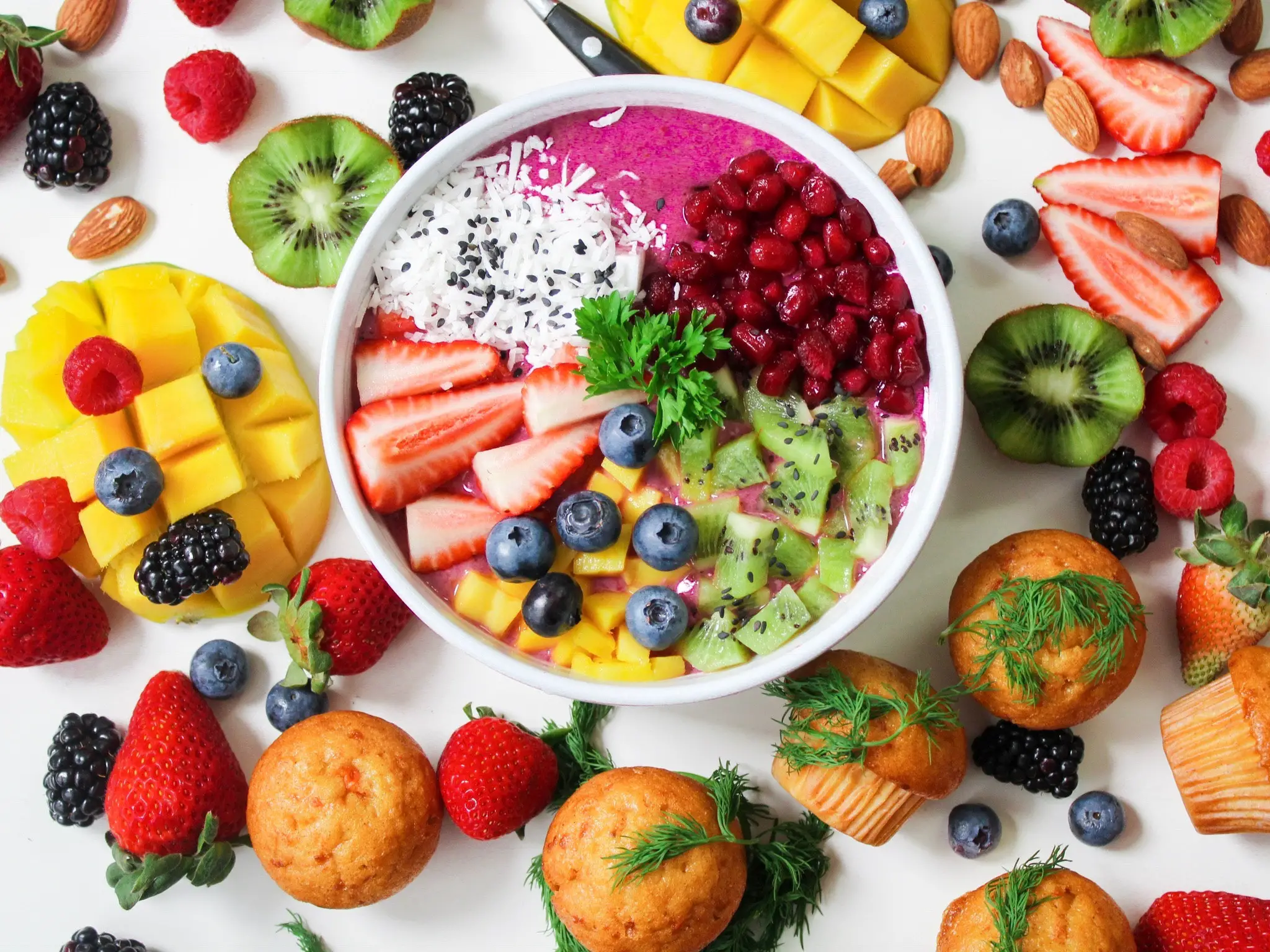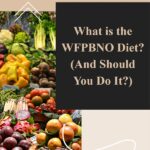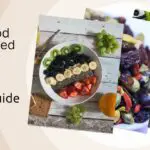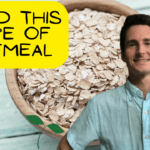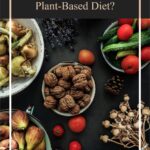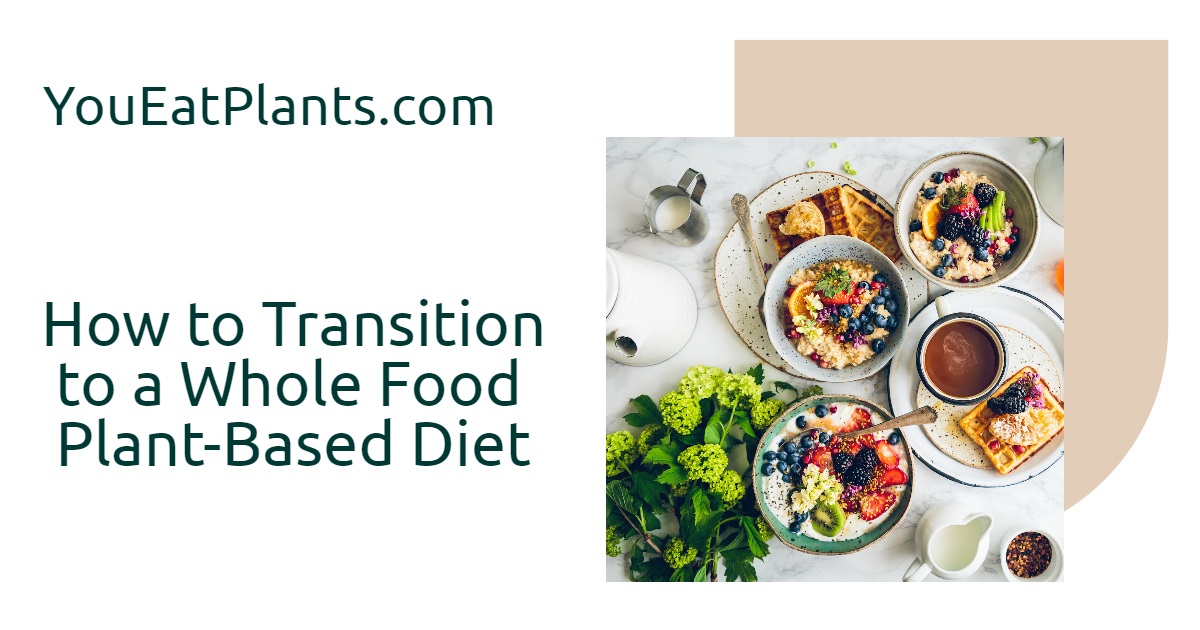
In this post, we’ll look at 17 steps or ways to transition to a whole food plant-based diet, as well as a look at some meal plans or ideas and whole food plant-based foods that you can incorporate.
I think it’s good to start off more simply and to look at the components of WFPBD individually. (See the Whole Food Plant-Based Diet (WFPBD) Beginners Guide for more)

You don’t want to try to do too much, just to end up quitting. What I mean is that it took our family time and stages before we eventually were doing an almost completely whole food plant-based diet.
So, I think it’s better to start in stages, work on a certain part, and allow your body and habits time to adjust. Then, you can add something else about the diet into your routine. And keep doing this until you finally get to a complete WFPBD.
Someone once said, “the best diet for you to do, is the one that you will stick with.” And I believe those words are so true when it comes to plant-based eating. Don’t run too fast out of the gate only to fall and quit. Only do what you are able and don’t be too hard on yourself.
Have patience and don’t try to do too much at first.
Contents
- Transitioning to a Whole Food Plant-Based Diet
- 1) Eliminate (or Minimize) Meat
- 2) Eat Way More Fiber
- 3) Eat Beans, Lots of Beans
- 4) Eat More Vegetables and Fruits
- 5) Eliminate or Minimize Dairy
- 6) Stop Eating Processed Foods
- 7) Cook Your Own Meals
- 8) Check the Nutrition Label
- 9) Stay Away From Sodas
- 10) Drink Water, and Some Coffee or Tea
- 11) Minimize Unnatural Processed Oils (Vegetable, Canola) and Trans Fats
- 12) Eat Plenty of Nuts
- 13) Eat More Whole Grains
- 14) Eat More Potatoes
- 15) Add a Little Olive Oil or Avocado Oil
- 16) Cut Down on Added Sugar
- 17) Get an Instant Pot or Slow Cooker
- Common Problems with a Plant-Based Diet
- Whole Food Plant-Based Diet Meal Plan
- Whole Food Plant-Based Diet Food List
Transitioning to a Whole Food Plant-Based Diet
Try to choose some of the following beginning guidelines, and follow the ones you are able to, one step at a time.
1) Eliminate (or Minimize) Meat
You can eliminate all meat (or at least minimize it) by progressing in steps until you are eventually consuming no meat or very little amounts of meat. In the Blue Zones diet, they found that most Blue Zones groups would eat no meat (such as the vegetarian Seventh-Day Adventists) or would only eat meat on occasion, that is maybe once a week or sometimes less.
In these regions, meat was used more as a celebratory item, and not an everyday food. And when meat was eaten, it was eaten in much smaller portion sizes than the typical American diet. Generally, it would be 3-ounce serving sizes, or about the size of your fist or a deck of cards.
Remember that meat leads to chronic disease and cancer, as Dr. Campbell and Harvard Medical have found. Also, there is a protein myth in society that says we need meat in order to maintain health. Otherwise, we won’t get enough protein.
This is absolutely false. We can get all the protein we need from plant sources, which provide plenty of protein and more than enough for our needs. (If you want a list of high protein plant-based foods in order to get even more protein, see High Protein Plant-Based Foods for Vegetarians & Vegans)
One argument is that plants don’t contain complete proteins with all the essential amino acids. But when you combine various plant protein sources together, they combine together to create all the essential amino acids, so this is not a problem.
Our family has been meatless for a length of time and we have not had any adverse effects. I feel great, am on no medications, and can even gain muscle mass from working out. We get all the protein we need from plants.
There are plenty of vegan athletes and bodybuilders nowadays who perform great and receive plenty of protein from eating plant-based foods. There are also plenty of very strong and healthy animals that only eat plants as well. See post on Animals That Only Eat Plants & What They Are Called.
Harvard Medical has some research that found that red meat was increasing the risk of death by 13% for every daily serving and 20% for every daily serving of processed meat. Imagine that a lot of people eat more than one serving a day of these products, and the numbers can go up and up.
Harvard Medical has been very much against red meat. They have some research against poultry as well.
If you need more proof about the unhealthiness of meat on our bodies, listen to billionaire Naveen Jain talk about how a meat-heavy keto or paleo diet can lead to the overgrowth of bad bacteria in the gut after about a month or so. (The point at which some people might start to feel bad)
Or watch Dave Asprey explain to us that if we eat more than 20% of our calories in protein, it increases all causes of mortality by four times.
Start out small by minimizing meat whenever or wherever you can. Maybe if you eat a lot now, you need to limit it to once a day at most and a smaller serving size. Then move to just eating it once a week.
Arnold Schwarzenegger recommends a Meatless Monday or one day of the week with no meat when starting out. Or if you make a dish or two for the week such as a soup, just use a smaller amount than you normally would, so you are consuming less throughout the week. Then you can work towards making the recipes without meat.
You can find recipes for meatless chili and meatless lasagna, as well as many others. Eventually, you may not even miss it. I know that I don’t.
For more plant-based meatless recipes, grab our free plant-based cookbook sample here. Or you can get 100 plant-based recipes, a meal plan, a shopping list and other bonuses for less than $20 by visiting Plant-Based Cookbook 2.0. (You can get a free sample of the cookbook here delivered to your inbox).
Plant-Based Meats
One option you might want to try in order to steer away from meat might be a plant-based meat option. The healthiest are usually black bean burgers or some type of burger made from whole foods. They are usually the healthiest if they are prepared at home, rather than store-bought.
There has been a big rise recently in the processed meatless plant-based burgers and also other plant-based meats you buy in the store or at fast food restaurants. Let me say, that processed plant-based meats are usually not the absolute most healthy thing you can eat, but they are better than the alternative of regular meat.
They don’t follow Dr. Campbell’s definition of “Whole Food Plant Based”, since not all the ingredients are in their whole forms. (How healthy are these meatless burgers?) They are usually made up of pea protein isolate or soy isolate.
But there was a study done that showed plant-based burgers to actually be healthier than red meat. Plus, they are much better for the environment.
There are also a lot of vegan meatless meat options that again, although healthier than the option of meat, contain some unnatural ingredients. One big culprit tends to be wheat gluten. This is found in a lot of vegan meat alternatives.
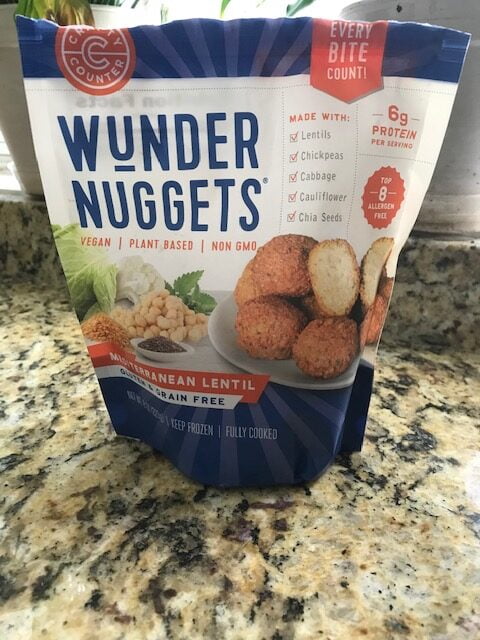
Usually, as I said earlier, the healthiest plant-based meats or burgers will be those made from beans or lentils as their main ingredient. Recently I found a product in the frozen food section which was plant-based nuggets made out of lentils, with very natural ingredients following. These are called Wunder Nuggets and they are meant to mimic chicken nuggets and are very tasty.
The downside is these premade plant-based meats can be a little pricey, and if you want to save money and have the time, I suggest cooking your own plant-based meats using recipes found online.
A final plant-based meat alternative option is tofu or tempeh. Tofu can be used in a lot of dishes in the place of chicken, and has a similar taste and feel.
Tofu, made from soybeans, is also very healthy and good for you. Fermented soybeans become tempeh, and this is another option as a plant-based meat.
There are a couple of companies that make tempeh plant-based meats and they can be very good. We found one that was meant to mimic bacon, with a smoky applewood flavor. And the ingredients were fairly whole food based.
What’s important is that you check the labels and don’t just go off what the front of the package advertises. This could just be marketing.
Actually, look at the nutrition label and see what ingredients are actually there and if it is actually a WFPBD product.
What We Did to Eliminate Meat from Our Diet
At first, I minimized meat by limiting us to at most 1 pound or so a week between the two of us, and some weeks I didn’t use it at all. For example, if I made spaghetti to be eaten throughout the week, I would only use one pound of beef, and that was it.
At the time we wanted to minimize meat, but we were still under the protein myth, believing that we needed some to still be healthy. One day I heard about the Game Changers documentary coming out. I was eager to see it and we watched it when it finally came out.
For us, it really was “Game Changing.” For the first time, I heard the evidence that we did not need protein from meat in order to survive or thrive! In fact, Olympic athletes and the world record weight lifter were all on Vegan diets! The science seemed very credible, and so we decided to give up meat entirely.
The good thing is now I don’t crave meat or think about it anymore. Growing up I worked for a Bodybuilding company that sold supplements and touted eating tons of protein.
The mantra in the bodybuilding community was that you needed to eat lots of meat to grow! So, I ate tons of meat.
In high school and college, I also ate lots of fast food and burgers because it was convenient. But now I don’t think about it or crave it.
It’s like my body is used to not having meat and has no desire for it anymore. I’m thankful for that.
2) Eat Way More Fiber
Although most people are overly concerned with their protein intake, and getting enough protein, protein is not what we need more of. Protein deficiency is fairly uncommon, even among vegans or vegetarians. (Protein deficiency is only a concern in areas where people are not consuming enough calories in general and are malnourished)
The big problem really is a fiber deficiency. In fact, 95% of Americans are deficient in fiber and do not get the recommended amount of fiber per day!
The way to increase your fiber is by following this guide, and especially the next tip on eating more vegetables, fruits and beans! All of these foods have tons of fiber. (Also chia seeds are a great source of fiber and are a natural plant-based food)
Fiber is so essential to our health, and we are now learning that it is essential to something called our microbiome, which really controls our health and well-being (even mentally).
The reason people are not getting enough fiber is that processed foods and animal products such as meat all have little or no fiber in them!
Meat and dairy have absolutely no fiber. And then processed foods such as sugar and white flour have all the fiber stripped and removed from them. Fruit juice is similar, it is processed so all the fiber is removed.
3) Eat Beans, Lots of Beans
Here’s the next major thing that really helped us out with eating a lot more whole food plant-based. In most Blue Zones groups, beans are staples of the diet.
Beans have also been called the best longevity food there is. Adding beans to your diet might help you live to be 100. It was found that beans were the food that was most in common for the longest-living Blue Zones.
They also come highly recommended by top nutritionists and food scientists. And, a previous study found that for every two tablespoons of beans consumed per day, the risk of death was lowered by 8%. We should aim for about a cup or more of beans a day.
Not only are beans loaded with healthy fiber, but they also surprisingly have a huge amount of antioxidants. Surprisingly, even more so than a lot of fruits and vegetables, which are known for their antioxidants.
The great thing about beans when on a WFPBD, is they are pretty easy to make, very cheap, extremely healthy, and go a long way in your cooking. There are so many whole food plant-based recipes that are bean-based. And the recipes are extremely delicious.
Almost all of our dinner recipes are some type of bean recipe. They are great and we love them. I buy the dry beans in bulk, and they are super cheap and convenient.
Another good thing is that beans have a lot of fiber and help to fill you up. So you’ll be less likely to be hungry, and that also goes a long way if you are looking for weight loss. You’ll feel full much faster than eating processed foods, so you’ll eat less, and you’ll be more satisfied.
Do you remember the old song? “Beans, beans, they’re good for the heart.” And they are! And oh yeah, the next part of the song.
To avoid gas from beans, it’s really helpful and beneficial to soak your beans overnight before cooking them. That helps remove a lot of the things we have trouble digesting, and makes them healthier and more digestible.
4) Eat More Vegetables and Fruits
When I was first married, my wife was always eating salads and I never was. But, I saw an interesting article on Curiosity.com at the time which said those who ate 6 servings of fruits and vegetables a day were happier.
Who doesn’t want to be happier? So, I started eating homemade green spinach salads every night with dinner.
I don’t know if it’s related, but for the first month, I did have some trouble with my stomach at night. It was a little bit of uneasiness I would experience at times.
I found an online forum and I did read some other vegetarians saying that when they switched to eating more vegetables, a lot of them had some temporary stomach uneasiness. This seemed to be common, so I assume this is what was happening to me.
I believe this is because of the increase in extra fiber, which our stomachs are not used to digesting. We don’t have enough of the good bacteria in our digestive systems that are able to break down fiber. (That bacteria in your gut and system is known as your microbiome)
But, as you eat more fiber over time, the bacteria needed to digest the fiber grows and multiplies. Then it is more available to digest the fiber, making this no longer an issue.
Smoothies as a Meal Replacement
Also when I was trying to go healthier, especially as a single guy on the go, I started drinking V8 fiber juice and also other premade healthy smoothies you can buy in the store. I also thought that drinking fruit juices was about the healthiest thing for you. That is, until my wife, who was in Medical school at the time, told me otherwise.
Now it is much better to drink fruit juice than a soda, by all means. You do get antioxidants and vitamins from drinking fruit juice. But, you don’t get one of the key ingredients which increases our health, one of the most overlooked nutritional components, and that’s fiber.
That’s also why fruit juice can spike our blood sugar so much. Because it doesn’t have the fiber to counteract all the sugar, like if you were eating it in its whole form.
Again, that’s why WFPBD is the answer. Because you want to eat the foods in their whole forms, and not processed or modified. So aim to eat your fruits and vegetables in the whole form, rather than fruit juice.
But there is one exception when you can drink your fruits and veggies. And that’s all-natural homemade smoothies. That is, ones that have the fruit and vegetables added in the whole form, and without a bunch of added sugar.
When I started going more plant-based, I decided to drink a lot of Green Smoothies. I think they are powerhouses for nutrition if you do them right.
I would make a couple of days’ worth at one time and save the leftovers in the fridge for the next day or two. At the time I was in Grad school, so I would just grab a green smoothie to go for my lunch before I headed off to class.
Very easy and very nutritious. Later on, I was eating enough healthy foods throughout the day that I didn’t need to make the smoothies anymore. But it was great starting out.
(If you want some help getting on to a smoothie diet or adding smoothies, you might benefit from the Smoothie Diet found here where you can get tons of recipes and meal plans, and more)
A good thing about the green smoothies is that you can get them to replace one entire meal during your whole day. For example, I was eating it for lunch. That’s a great way to replace less healthy foods with something much more nutritious.
5) Eliminate or Minimize Dairy
Dairy has been found to have some of the same adverse effects on health as meat. Just remember, it’s an animal product too. And that’s what we want to get away from.
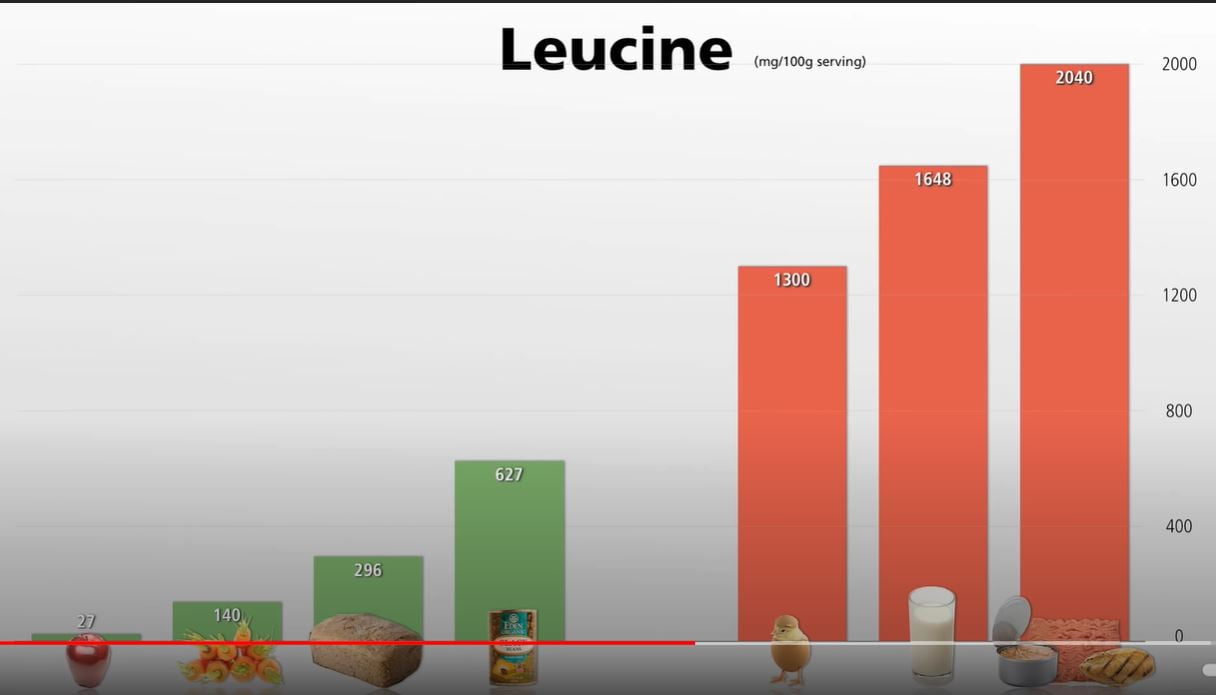
Some research has found that minimizing calories lowers mortality rates. And it’s been found this might be due just to the fact that an amino acid called leucine is being reduced in the process.
Leucine might very well be what is aging us and causing some diseases. Leucine is found much higher in all animal food sources, which includes meat, dairy and eggs, with meat and dairy being the highest.
Instead of regular milk, which is usually also loaded with hormones and anti-biotics, we will get either soy milk, coconut milk, or almond milk as an alternative. Try to avoid dairy as much as possible.
Soy milk is actually incredibly healthy, despite some of the bad misinformation concerning soy. Soy in general is one of the healthiest foods we can consume.
Also, soy milk can be ok to give to toddlers. Our child had a milk intolerance, and the pediatrician said soy milk was acceptable. Please check with your pediatrician first though and wait till an appropriate age.
6) Stop Eating Processed Foods
Processed foods go against one of Dr. Campbell’s main pillars. Eat whole foods in their natural form.
Processed foods are usually absent of any nutritional value, and are usually packed with harmful stuff, even though they might be plant-based. We are talking about lots of processed and unnatural ingredients such as vegetable oils and sugars.
And a lot of times they are also loaded with preservatives, chemicals, and food colorings, just to name a few.
There is actually a term, HCLF vegan. What is an HCLF vegan? It stands for high carb low-fat vegan.
This is someone who is vegan and doesn’t eat animal products but eats a lot of carbs in their diet with very low amounts of fat. This can have some pitfalls. The problem is a lot of the times when someone might choose to go vegan, they end up eating a lot of “Vegan junk food”.
These are usually high carb and low fat processed foods. But these processed foods are not great for the body. They might be good for the environment and animals, but we need to be eating “whole foods” and not processed foods.
The person in this video below talks about a bad experience with HCLF, and if you notice, she was eating a lot of processed foods such as processed bread and noodles. (High gluten products made from wheat flour). An alternative would be Ezekiel bread (unprocessed and whole) and also there are a lot of brands now that make natural chickpea or lentils noodles. (Which are gluten-free)
It’s ok to be high carb, as many of the Asians were in the China Study, but don’t eat processed carbs. They were eating natural unprocessed carbs such as potatoes and whole grains.
As I mentioned earlier, it’s good to check the product nutrition labels to find out what you are getting in your food products before buying.
7) Cook Your Own Meals
So many options for pre-made foods, fast foods, or foods at restaurants are not healthy whole food plant-based options. Instead, most food options, especially in America, are meat-based and also don’t have lots of fiber or nutritional foods in them.
That’s why the number one thing we started doing to help us go plant-based was to cook our own meals. This way you can control the ingredients that go into the foods, and also this makes sure you are using whole foods rather than processed foods instead.
I recommend finding some good plant-based recipes, such as those found in the Plant-Based Cookbook 2.0 which you can get here. Indian recipes are usually a good choice because they tend to be more vegetarian due to their culture.
The interesting that most people don’t realize about a plant-based diet, is that plant-based meals and foods are actually very delicious! We have some awesome plant-based recipes such as some lentil dishes that are very tasty.
In fact, I’ve read on Reddit where someone commented that their meat-eating family started eating their plant-based meals when they visited, and were astonished at how tasty they were! In fact, even Gordon Ramsey is getting into vegan foods as he is finding out how tasty they actually can be!
8) Check the Nutrition Label
I recommend cooking your food as the first rule of thumb. But, when you do need to purchase food, it’s always important to check the nutrition label on anything you are buying.
Don’t just read the marketing used on the front of the box. You need to check the ingredients to know what’s in the food, and if it has whole foods or processed foods in it.
Here’s a good rule of thumb. If you can’t pronounce an ingredient on an ingredient list (usually a chemical name or highly processed ingredient), then you might want to stay away from it. If there are multiple ingredients in a food that you can not pronounce or recognize, you definitely want to avoid it.
9) Stay Away From Sodas
Sodas are a big no-no, and one of the worst things you can eat or drink for your overall health. Sodas are massive amounts of sugar contained in a very little quantity that is quickly consumed.
Nowhere in nature would we ever get that much sugar at one time, let alone without any fiber to slow down the blood sugar spike. They also contain unnatural colors and chemicals. Furthermore, they contribute largely to weight gain as empty calories.
And even those made with no-calorie sweeteners can be just as unhealthy. A lot of these sweeteners are artificial and not good for our bodies.
10) Drink Water, and Some Coffee or Tea
Instead of drinking these sodas or sugary fruit drinks, opt for water instead. Also, tea is incredibly good for you, especially the green tea variety. Coffee as well also has tons of antioxidants and health benefits.
The only thing is to watch out for adding too much extra sugar or dairy to your coffee or tea, as this can quickly make it unhealthy and full of empty calories. (Think of a Starbucks Frappuccino, lots of sugar and calories)
11) Minimize Unnatural Processed Oils (Vegetable, Canola) and Trans Fats
These unnatural processed oils such as vegetable oil and canola oil, as well as trans fats, are not whole foods. Even though they are plant-based, they are not in their natural whole form. Vegetables do not naturally have very much fat, so a chemical process must be done in order to create an oil from them.
Avoid these whenever possible and opt for healthier more natural oils, such as olive oil and avocado oil instead. This can be hard though because vegetable oils are found in a ton of store-bought foods. Which is one more reason to avoid processed foods in general.
This is actually the idea behind the WFPBNO Diet (Whole Food Plant-Based No Oil Diet). You can read about the WFPBNO here, as well as my thoughts and experience with it. As you will read, I don’t fully agree that all oils should be eliminated, and I like to use olive oil in my diet.
But, if you are trying to lose weight, oils have the most calories, and so eliminating them can really help to reduce calories.
12) Eat Plenty of Nuts
Nuts are extremely good for you and are great as a snack. They can also help to fill you up rather than snacking on less healthy junk food.
Good choices are peanuts or peanut butter (the natural kind), almonds, walnuts, cashews, pistachios and pecans. I buy the tub of mixed nuts to snack on during the day.
Also, I love peanut butter as a sandwich option at lunch or anytime. Or just a scoop of peanut butter when you need it!
Aim to eat two handfuls of nuts each day. (Trying to decide between pecans vs. walnuts?)
13) Eat More Whole Grains
Whole grains are great for you. It was found in the China Study that the healthiest persons consumed far more natural whole grains than Americans did. This can include oatmeal, which is a great breakfast option, grits, brown rice (white rice is not as healthy), and Ezekiel or naturally made bread.
One caveat to watch out for here is too many processed white flour foods. Instead, look for whole wheat options.
White flour has had all the fiber stripped out of the wheat product. This is why it can spike your blood sugar levels so high.
For bread, I think the absolute best option to eat is Ezekiel bread, which is much healthier and does not have flour in it. What breads are ok on WFPBD? Ezekiel bread is a true WFPBD bread.
A lot of times gluten is seen as a bad ingredient in foods. I think the main problem with most gluten-containing foods is they are usually highly processed for quick production and mass consumption.
Usually, they are made with white flour being the main ingredient, which is not a whole food at all. The wheat is pulverized into flour and parts of the wheat are removed that normally would have been consumed together as a whole.
A lot of the fiber and nutrients are removed in the process. The result is usually highly processed foods such as bread and desserts, which also don’t digest well in our bodies.
Ezekiel bread on the other hand is made using whole wheat and beans, and not any flour. It contains other healthy whole grains as well. You can usually find it in the freezer section of your grocery store.
14) Eat More Potatoes
Potatoes are actually a food that is fairly good for you. Sweet potatoes are even better.
In fact, the Okinawa Japanese, one of the five Blue Zones groups, eats tons of sweet potatoes. Approximately two-thirds of their diet is sweet potatoes!
Potatoes are easy to cook in the microwave, and can be added to pretty much any meal fairly easily. You also have the option of mashed potatoes.
15) Add a Little Olive Oil or Avocado Oil
Although oil is a little bit controversial on a whole food plant-based diet, I still believe in it. The right kind of healthy oils, that is.
And that’s olive oil and avocado oil. (See WFPNO, My Experience and Thoughts) Consume them in moderation and aim for 3 tablespoons or so a day.
Also, try not to let them become heated at too high of temperatures, as this can cause any oil to become rancid. Olive oil drizzled on salad as a dressing is a great option!
Also, avocado oil is a great option for cooking since it has a very high smoke point before it might go rancid from high heat.
16) Cut Down on Added Sugar
There’s nothing really good about processed sugar for our health. It has been found to age us and is full of empty calories and void of nutrients. It also disrupts blood sugar levels and insulin sensitivities.
Sugar is hard to avoid since it is placed in a lot of processed foods, and usually in very high quantities. Always check the nutrition label to see how much added sugar there is.
Try to avoid anything that has more than 8 grams of added sugar, and preferably look for items with no added sugar.
It was found that those in the Blue Zones generally ate a fraction of the amount of sugar per day that Americans do. They did consume some, but it was in much lower amounts, about 25% of the amount.
Sugar from fruit has become a little controversial, but I don’t think it needs to be. And a lot of this might be because of fruit juices that contain a lot of sugar with no fiber.
Sugar from fruit (fructose) is ok as long as you are consuming the fruit in its whole form with all the fiber. The fiber prevents the sugar from spiking blood sugar levels and slows digestion.
17) Get an Instant Pot or Slow Cooker
We have found our Instant Pot to be great for cooking WFPBD meals! It makes cooking beans, rice and quinoa much easier.
Another good option to have is a Slow Cooker (Crockpot), as this might help with making bean-based soups. There are some great WFPBD Instant Pot recipes and I will try to add some in the future.
Common Problems with a Plant-Based Diet
One of the main problems you will face when switchfing to a plant-based diet, is not having many food options if you are used to eating meat (or dairy). Most of our meals are built around meat, so this can be a big transition.
That’s why I find that beans are such a great source of food on a plant-based diet, as these can provide a staple for your new meals. There are so many tasty bean dishes (especially Indian flavored ones) that you will truly enjoy, and you won’t miss your old foods as much (and may even look forward to the new meals as we do)
In fact, in many other countries, beans are a staple in meals. It has only been in the last decades in Western societies that meat has replaced beans as the protein of choice. So it’s definitely possible to eat plenty of beans as one of your main foods instead of meat.
A similar problem you will face is that a lot of restaurants and places to eat out are meat-heavy and do not cater to a plant-based diet very well. This is why I recommend learning to cook some simple meals for yourself. Sometimes this can be one of the only ways to get truly healthy and wholesome plant-based meals. And it will be much cheaper.
You can also try to search for vegetarian or vegan-friendly restaurants. There is an app called Happy Cow that can help you do this.
Switching to a Plant-Based Diet Side Effects
One final problem when you are first transitioning to a plant-based diet, is that you might begin to have some tummy troubles, along with discomfort and gas.
I had this problem for the first month of going plant-based. I had some stomach trouble (and slight pain) at night time. After searching online I found a forum with many vegetarians saying they had the same problem when going plant-based.
I believe this is because your digestive system does not have the proper bacteria developed to easily digest the increase in fiber that you get from all the plant-based foods (which are much higher in fiber than animal-based foods, which have none). Although the fiber is very good for you, and one of the most underrated nutrients we can consume, it takes time to be able to properly digest this fiber.
This is because studies show that the vast majority (over 90%) of Americans are deficient in fiber, which means we haven’t developed our systems to digest fiber. This will change over time and your system will adapt, but you may want to go plant-based in stages in order to avoid or minimize this discomfort.
Whole Food Plant-Based Diet Meal Plan
Here are some of my ideas on what I eat in a day and what we do for WFPB meals. If you want an actual meal plant, you can get one with the Plant-Based Cookbook, all for less than $20!
Whole Food Plant-Based Diet Breakfast
For a WFPB Diet breakfast, we love to do a bowl of oatmeal. Oatmeal is whole food plant-based, gluten-free and can be cooked easily in the microwave if you get quick-cook oats. I add tons of healthy plant-based foods to the oatmeal, including
- Soaked Chia Seeds – Here’s how you can soak chia seeds.
- Ground Flax Seed
- Hemp Seeds
- Soy milk
- Canned Coconut Milk
- Fruit (Blueberries, Strawberries, Peaches, Mangos, Pineapple, Bananas)
- Cacao Powder
- Cinnamon
- Honey
- Cacao Nibs
- Raisins
You can get the recipe here at My Healthy Whole Food Plant-Based Breakfast Oatmeal Bowl
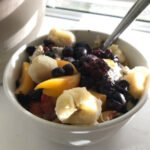
Another option we like are almond flour pancakes. These are yummy and I will make them when I have more time in the mornings to do so. Also, if you double the recipe, you can have leftovers!
Whole Food Plant-Based Diet Lunches
One good option for WFPB lunches could be a peanut butter sandwich made with Ezekiel bread. Also, a bowl of soup or a bean recipe might be a nice option. If you are doing the Mediterranean plant-based diet then you might have some hummus.
A lot of the time now, we are making some homemade black bean burgers and putting them on some Ezekiel bread. If you bake a potato in the microwave and add a little bit of olive oil, I think it tastes just like French Fries! But, much healthier.
One thing I used to do all the time for lunch was to make Green Smoothies and drink them as my lunch. They were quick, fairly easy, and nutritious. You can get started with smoothies at the Smoothie Diet here.
Whole Food Plant-Based Diet Dinners
Any dish that is bean-based is great as a WFPB dinner recipe. Also, anything that is lentils based is great as well.
We sometimes do a vegetarian/vegan meatless chili that is wonderful. Also, I would prepare a spaghetti meal using healthy 100% chickpea or lentils noodles that you can find at the store. That is a very easy meal to make.
A lot of Indian dishes are wonderful if you are plant-based since they tend to be more vegetarian. Also, the spices used will usually make them extremely tasty! We love red curry lentils, coconut curry lentils, and lentils dal.
Another option is the Mediterranean diet if you cut out a lot of the meat. (The actual Mediterranean Diet has very little meat, see What is the Real Mediterranean Diet? (From Crete, Greece) to learn more)
Whole Food Plant-Based Desserts
You might be surprised, but there are a lot of very delicious WFPB Diet desserts! And some are actually quite healthy for you. And yes, there are such things as WFPBD cookies!
Here’s the thing. There are a couple of key things you want to change for your WFPB desserts compared to regular desserts.
First, we use almond flour since it is much healthier than regular or whole wheat flour. You can find lots of recipes for almond flour desserts. Usually, almond flour can be used instead of wheat flour.
But, you usually need a specific almond flour recipe. Otherwise, if you just substitute almond flour for regular flour in a recipe, the results might be strange. So look specifically for almond flour desserts.
Second, if you are looking to get rid of butter, a lot of vegan recipes will replace butter with coconut oil or other oils. I will be making a page for vegan desserts in the future.
Third, honey or maple syrup is a healthy alternative to regular sugar. A lot of WFPBD dessert recipes will call for honey anyway. But if not, you can usually replace the sugar with honey, using a certain ratio you can find on the web.
Fourth, if you want to avoid eggs, you can substitute chia seeds, flax seeds, or even applesauce instead.
A final thing is that WFPBD and vegan desserts will avoid processed vegetable oils, which might be another good thing. Although some evidence points to these oils being alright or even healthy for us, at least in normal doses.
Some WFPBD desserts we love are:
- Black Bean Brownies
- Almond Flour Brownies
- Almond Flour Chocolate Chip Cookies
- Almond Flour Oatmeal Cookies
- Chickpea Cookie Pie
- Frozen Banana Ice Cream
- Keto Bombs
Whole Food Plant-Based Snacks
For snacks, I will usually snack on nuts or peanut butter. You can usually find peanut butter with minimal or no added ingredients.
I also have a great recipe for almond flour protein bars which is a great WFPB snack option. Another wonderful option is Lara Bars. They are usually 6 ingredients or less and all-natural whole ingredients as well, such as dates.
Some people like chickpea snacks, which are chickpeas that have been cooked in oil and are edible.
Sometimes I will cook some popcorn from the natural whole kernels over the stove. This can be a yummy treat as well with some salt, olive oil, or cinnamon.
Find more ideas at Whole Food Plant-Based (WFPB) Snacks.
Whole Food Plant-Based Diet Food List
Here’s a good Whole Food Plant-Based Diet foods list for the next time you are grocery shopping. This is by no means a complete list, but I will try to include some of the most popular food items you can eat on WFPB.
Beans or Legumes
- Black beans
- Kidney beans
- Garbanzo beans (chickpeas)
- Navy or Great Northern beans
- Lentils
- Pinto beans
Any kind of bean not listed here is a great option. You can buy in bulk since beans, whether dry or canned, will have a long shelf life and not go bad.
I prefer buying dry beans, soaking and cooking them ourselves. They are cheaper overall.
But, if you are limited in time then canned beans can be a much more convenient option.
Fruits
- Oranges
- Bananas
- Apples
- Grapes
- Kiwis
- Pears
- Peaches
- Plums
- Raisins
All fruits are great choices and loaded with antioxidants. However, try to avoid canned fruits which have lots of added sugars.
If you need to, frozen fruits are a great choice or alternative to fresh fruits and can last a long time without losing nutrition. Bananas are usually very cheap and have a good nutritional profile.
Some people ask, does WFPB include raisins? Absolutely. Raisins get a bad rap sometimes, but they are pure and simple whole fruits and fit into the WFPB.
They are not broken down into separate parts like processed foods. They are kept in their whole forms. (If you need some ideas see Top 10 Most Popular Fruits or 100 Fruit Names (Most Popular Fruits in the World)
Vegetables
- Spinach
- Kale or leafy green vegetables
- Onions
- Cabbage
- Celery
- Garlic
- Carrots
- Tomatoes
- Cucumbers
Try not to skip the vegetables, they are very nutritious and good for your overall health.
If you are going to get one main vegetable, I would focus on either spinach, kale, or a leafy vegetable. These are very good for you and are usually the easiest to eat by making a salad or adding to food.
Try to eat one of these options instead of just regular romaine lettuce, which does not have as many health benefits.
Also, cabbage is a great option if you can cook it once and eat it throughout the week. Purple cabbage is a little bit healthier.
But both kinds are great and cabbage is one of the most underrated vegetables and is tremendously good for you. Some cultures in the East eat lots of cabbage. (If you need vegetable ideas, see 20 Most Popular Vegetables in the U.S. or 100 Vegetable Names – Most Common in the World)
Tubers
- Potatoes
- Sweet Potatoes
Potatoes are great and we eat them all the time. The Okinawa Japanese, some of the longest-living people in the world, have a diet of 66% sweet potatoes!
Potatoes are also fairly easy to cook in a microwave if you know how to. (That’s how I cook them easily)
Whole Grains
- Brown Rice
- Ezekiel Bread
- Oatmeal
- Grits
- Quinoa
- Millet
- Farro
- Barley
Oatmeal is wonderful for breakfast and very easy to make in the microwave or as overnight oats. (See my Healthy Plant-Based Oatmeal Breakfast Bowl)

Ezekiel bread is a staple for us as it is the healthiest kind of bread you can get and it is highly unprocessed (most bread is very processed and broken down, not whole foods). To me, Ezekiel bread is the best bread for WFPB. (It is pricier though. If you can’t afford that, look for whole wheat or whole grain bread with fiber)
Brown rice is a staple for us and is easy to cook in the microwave, or even easier and better in an Instantpot or rice cooker. Try to avoid white rice and go for brown rice instead since it is a healthier option. Brown rice goes well with many meals, as well as quinoa.
Nuts & Seeds
- Almonds
- Walnuts
- Peanuts or Peanut Butter (Natural)
- Pecans
- Pistachios
- Hemp Seeds
- Flax Seeds
- Chia Seeds
- Cashews
- Almond Flour (great gluten-free and healthy substitute for regular or wheat flour)
Nuts are some of my favorite whole-food plant-based foods. They are easy to eat and snack on when you are on the go. (I actually love trail mix)
Also, peanut butter can serve to make sandwiches or other options very easily. Hemp Seeds, flax seeds, and chia seeds are all extremely good for you. (See Chia Seeds Ultimate Guide to learn about chia seeds, one of my favorite plant-based foods)
Almond flour is the best alternative to wheat or white flour, is healthier, and is also gluten-free.
Oils
Oils on the Whole Food Plant-Based Food list include:
- Olive oil
- Avocado oil
Oils are controversial, but I do believe that olive oil and avocado oil are actually healthy for you (in moderation).
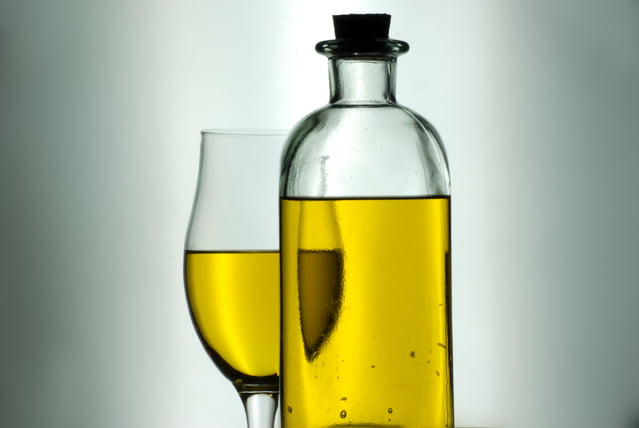
You might want to try to avoid processed vegetable oils though, or at least cut back on them. They are made from vegetables but it is a very unnatural process since vegetables don’t naturally contain much fat to produce oil from.
The result tends to be very high in omega-6 fats. Because of this, we end up consuming much more omega-6 fatty acids from them than we normally would from eating plants in their whole forms. Link
(Learn how to increase your plant-based omega-3 fatty acids at How I Get My Plant-Based Omega-3 Fatty Acids!)
On the other hand, even the American Heart Association says that olive oil is a good choice. See my article where a Cardiologist eats a heart-healthy plant-based Mediterranean Diet, including olive oil, to keep her heart healthy.
Superfoods
There is a category of plant-based foods that are incredibly good for us and contain tons of antioxidants and other health benefits. Superfoods are foods with tons of health benefits, nutrients and antioxidants.
Foods can be in one food category and still be considered a superfood as well. For example, kale can be considered a superfood and it is a vegetable. Pomegranates are considered superfoods and fruits. But something like Spirulina or Blue Spirulina, doesn’t really fit into any other previous category, and we will just call it a superfood.
Lance has been passionate about the plant-based diet and we have been following a whole food plant-based diet for over 5 years. We focus on health, natural healing, weight management, animal rights, and the health of the planet and environment by focusing on whole plant-based foods and sustainable practices.
Learn more at the About Me page and follow on social media at the links below.

